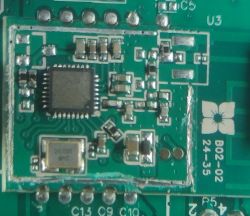I already have the moisture reading done, but I want to ask about the dig_H4 and dig_H5 .
For what purpose under Register content at dig_H4 the information [11:4]/[3:0] , and at dig_H5 --> [3:0]/[11:4] ?
It seems to me, that to correctly read the value of dig_H4 and dig_H5 only the information in the box "Register Address" is needed.
![[lua] BME280 - How to correctly read the temperature from registers 0xFA-0xFC? [lua] BME280 - How to correctly read the temperature from registers 0xFA-0xFC?](https://obrazki.elektroda.pl/3185726200_1519574276_thumb.jpg) .
.
For what purpose under Register content at dig_H4 the information [11:4]/[3:0] , and at dig_H5 --> [3:0]/[11:4] ?
It seems to me, that to correctly read the value of dig_H4 and dig_H5 only the information in the box "Register Address" is needed.
![[lua] BME280 - How to correctly read the temperature from registers 0xFA-0xFC? [lua] BME280 - How to correctly read the temperature from registers 0xFA-0xFC?](https://obrazki.elektroda.pl/3185726200_1519574276_thumb.jpg) .
.






![[lua] BME280 - How to correctly read the temperature from registers 0xFA-0xFC? [lua] BME280 - How to correctly read the temperature from registers 0xFA-0xFC?](https://obrazki.elektroda.pl/4378695600_1519641336_thumb.jpg)
![[lua] BME280 - How to correctly read the temperature from registers 0xFA-0xFC? [lua] BME280 - How to correctly read the temperature from registers 0xFA-0xFC?](https://obrazki.elektroda.pl/6131726900_1519726561_thumb.jpg)
![[lua] BME280 - How to correctly read the temperature from registers 0xFA-0xFC? [lua] BME280 - How to correctly read the temperature from registers 0xFA-0xFC?](https://obrazki.elektroda.pl/8124187600_1519843105_thumb.jpg)
![[lua] BME280 - How to correctly read the temperature from registers 0xFA-0xFC? [lua] BME280 - How to correctly read the temperature from registers 0xFA-0xFC?](https://obrazki.elektroda.pl/2407155800_1520019412_thumb.jpg)
![[lua] BME280 - How to correctly read the temperature from registers 0xFA-0xFC? [lua] BME280 - How to correctly read the temperature from registers 0xFA-0xFC?](https://obrazki.elektroda.pl/8347157200_1520020799_thumb.jpg)